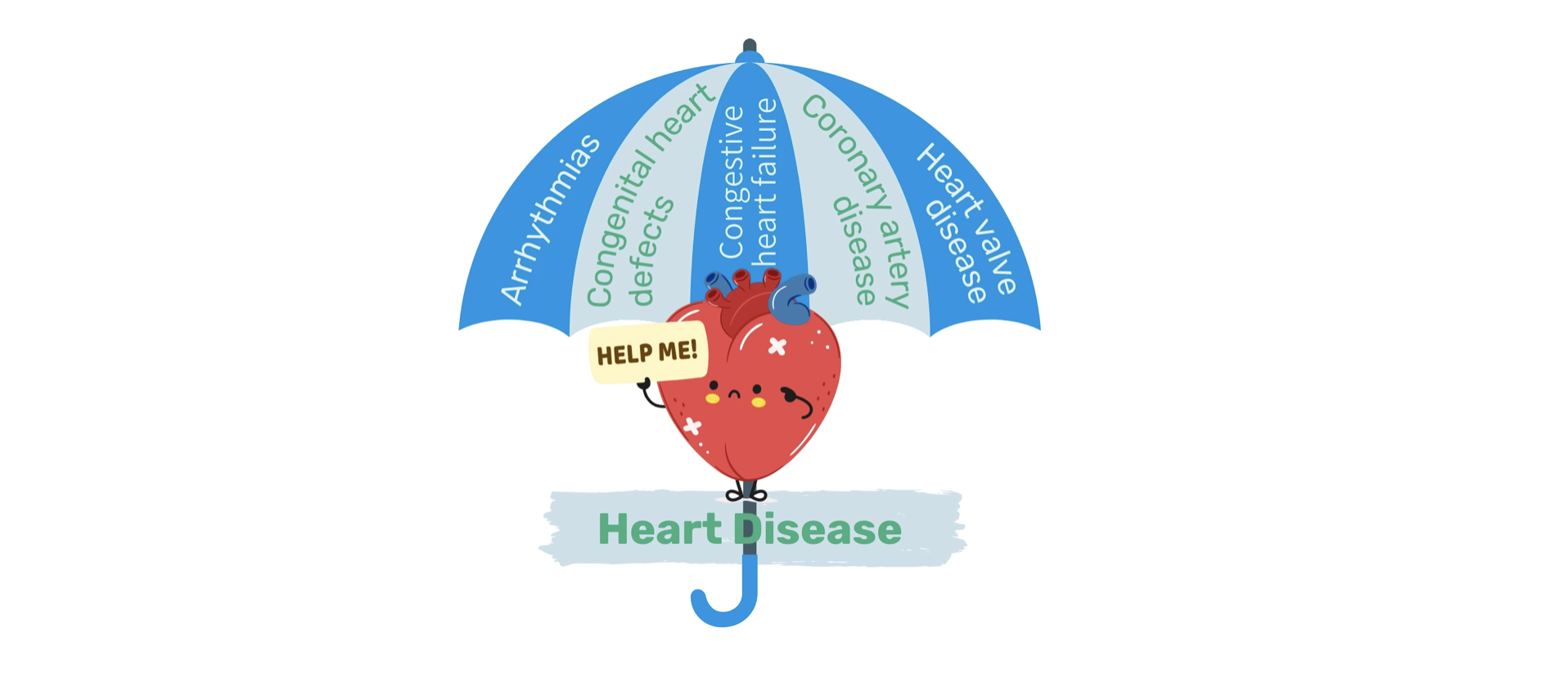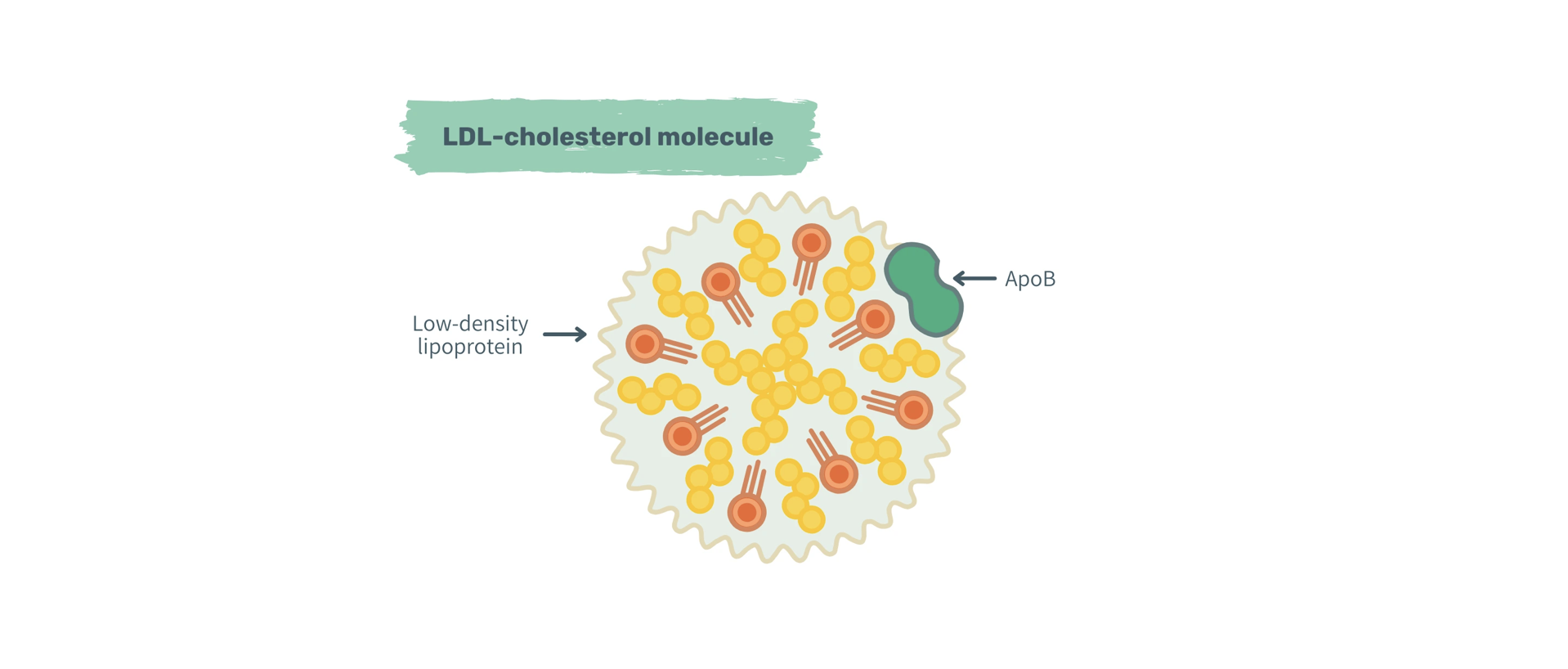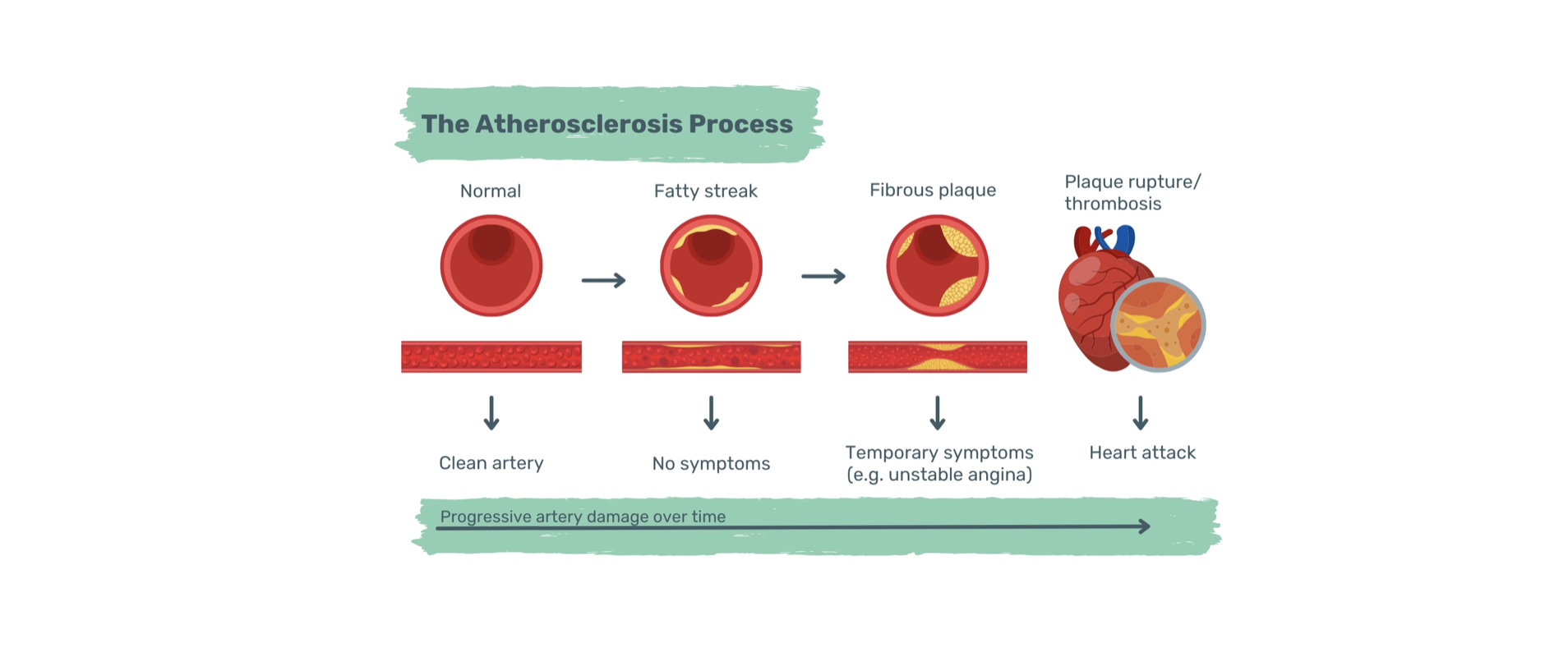Heart Disease: A Patient Guide to Prevention and Reversal
By Terri Chrisman M.Nutr, Dip.ACLM from the PAN Academy – our online learning platform where you can learn all about nutrition and health.
Heart disease – the biggest killer of humans
If you have five friends, one of them will die of heart disease. Heart disease kills more people than any other cause (1). You probably already know a couple of people who either have heart disease or have died from it.
56.5 million people per year die of this condition worldwide (2). One person dies of heart disease in America every 33 seconds (1). But it doesn’t have to be this way. The type of heart disease that causes heart attacks and early death, coronary artery disease, can be reversible, saving millions of lives. In this article, you will learn what causes this disease and how you can avoid it or, if you have already been diagnosed, likely even reverse it.
What is heart disease?
First, let’s discover what heart disease is. Heart disease is an umbrella term for diseases that affect the heart. These include coronary artery disease, congestive heart failure, arrhythmias, congenital heart defects and heart valve disease. In this article, we will focus on coronary artery disease, also called ischemic heart disease. It’s the type of heart disease that causes so many deaths. Coronary artery disease occurs when cholesterol builds up in the arteries that feed the heart muscle and become clogged with fatty plaques. If they become completely blocked, blood is restricted to the heart and the heart tissue dies. This is called an acute myocardial infarction, or more commonly, a heart attack.
What leads to a heart attack?
Eating foods containing saturated fat (animal products, meat and dairy) increases the likelihood of high blood cholesterol. Low-density lipoprotein (LDL)-cholesterol, the so-called ‘bad’ cholesterol, can become trapped in the walls of arteries, including those supplying the heart. The higher your blood LDL-cholesterol levels, the more cholesterol gets stuck in the artery wall. Once trapped, the cholesterol triggers an immune response and fatty streaks inside the blood vessels start to form. Smooth muscle cells from inside the vessel wall assist by covering the streak with a fibrous cap – like a scab. This is called a plaque. At the same time, calcium is deposited in the area, stiffening the blood vessels. This entire process is called atherosclerosis. If left unchecked, atherosclerosis can be fatal.
Why does atherosclerosis occur?
The main culprit of atherosclerosis is high blood LDL-cholesterol which contains a particle called apolipoprotein B (apoB). ApoB is what gets trapped in the artery walls and it brings LDL-cholesterol along with it. The more apoB, the more LDL-cholesterol can get trapped in the artery walls (3). The human liver produces cholesterol but, in a standard Western diet, some also comes from the food we eat. Dietary cholesterol is present in animal products, but not in plant foods. Further, saturated fat raises blood LDL-cholesterol. It is present in animal products such as meat and cheese, vegetarian pastries and baked goods made with palm oils. Removing saturated fat and cholesterol from the diet helps the arteries clear the plaques and thus diminish the risk of coronary artery disease. This is an example of the amazing ability of the body to heal itself. Simply removing cholesterol-containing animal products from the diet and switching to whole food plant-based foods can potentially reverse previous artery damage.
How do I know if I have high LDL-cholesterol?
To find out if you have high cholesterol, you can ask for a lipid panel blood test from your doctor. Your doctor will be able to tell you which tests are right for you. They usually measure total cholesterol, high-density lipoprotein (HDL)-cholesterol and LDL-cholesterol. Interestingly, the measure of LDL-cholesterol is just an estimate, derived from the measure of total cholesterol. Recent research suggests that measuring blood apoB levels is a more direct measure of LDL-cholesterol and a much better indicator of heart disease risk (4). In healthy people, current guidelines recommend LDL-cholesterol levels should be less than 100 mg/dL or 2.6 mmol/L (5). If LDL-cholesterol is less than 70 mg/dL (1.8 mmol/L) this arrests plaque formation and can even reverse the process of atherosclerosis (5). But remember that blood tests don’t always tell the whole story. If you are consistently eating a whole food plant-based diet and your cholesterol numbers are still high, speak to your doctor about other factors that might be in play.
How can a plant-based diet reduce my risk of heart disease?
As we mentioned previously, atherosclerosis is the cause of coronary artery disease and heart attacks. Reversing atherosclerosis is possible with a whole food plant-based diet. Let’s look at two key studies showing the benefits of dietary change for the reversal of this condition.
Dr. Dean Ornish and colleagues put 28 patients with existing heart disease on a plant-based diet allowing a small amount of egg white and low-fat dairy products. The program also included exercise and stress reduction techniques. The study team allocated an additional 20 patients to a control group who did not make dietary changes. Dr Ornish’s randomised controlled trial lasted one year. It measured the severity of angina (pain in the chest caused by reduced oxygenated blood to the heart) and the amount of stenosis, or blockage, in the heart arteries.
The patients in the intervention decreased their angina symptoms by 91% whilst those in the control group of usual care increased their angina symptoms by 165%. The stenosis (blood vessel blockage) of the plant-based group improved by 5% whilst the stenosis of the control group worsened by 4%. LDL-cholesterol in the plant-based group fell by 34.7% (6).
Dr. Caldwell Esselstyn, a renowned cardiologist from the Cleveland Clinic in the USA, recommended a whole food plant-based diet without oil to 198 of his patients. All patients had pre-existing atherosclerosis and other problems such as high cholesterol, diabetes or high blood pressure. Forty-four of them had experienced a previous heart attack.
One hundred and seventy-seven patients took Dr Esselstyn’s advice and changed their diet. Twenty-one of his patients chose not to change their diet. Over an average period of four years, only one patient (0.6%) on the plant-based program experienced an adverse health effect (a non-fatal stroke). The other 176 people on the plant-based diet experienced massive improvements in their health. Thirty-nine of them (22%) completely reversed their heart disease!
Of the 21 patients who chose not to switch to a whole food plant-based diet, two of them (18%) died. Thirteen of them (63%) experienced an adverse event such as a heart attack or stroke (7).
These are just two examples of how effective a whole food plant-based diet can be in reversing existing heart disease.
How do plants reverse atherosclerosis?
Whole plant foods contain thousands of phytochemicals, including polyphenols and flavonoids that act as antioxidants to stop cellular stress. These phytochemicals help repair the blood vessel walls and remove fatty plaques from the arteries. They also reinstate the vessels’ flexibility so they can dilate and contract according to blood flow requirements. Removing processed foods and cholesterol-containing animal products from the diet stops the formation of new plaques.
What is a heart-healthy diet?
To stop atherosclerosis in its tracks, the first line of defense is to remove dietary saturated fat and cholesterol. That means drastically reducing or, ideally, removing animal products from the diet, especially meat, dairy, and poultry. Replace these unhealthy foods with whole plant foods such as fresh fruit, vegetables, legumes, whole grains, nuts, seeds, herbs and spices.
The fibre found in whole plant foods reduces the risk of cardiovascular disease by reducing total and LDL-cholesterol. In the colon, fibre produces short‐chain fatty acids, compounds that slow the production of cholesterol (8). Also, fibre helps decrease inflammatory immune system molecules called cytokines that play a part in atherosclerosis progression (9).
How do I get started?
Start by checking out delicious plant-based recipes on the internet. Go at your own pace. You can go all in and switch to a whole food, plant-based diet 100%, or you can slowly remove unhealthy foods. Do what works best for you.
Replace saturated fat from animal products and palm oils with mono-unsaturated and omega-3 poly-unsaturated fat. Omega-3 fats can improve the actions of the ‘good’ HDL-cholesterol (10). HDL-cholesterol is considered good because it acts like a broom, sweeping away LDL-cholesterol from inside the blood vessels. You can find healthy fats in walnuts, chia seeds, flax seeds, and avocados.
High blood pressure, or hypertension, is a risk factor for heart disease. Keep your blood pressure low by avoiding smoking, and chronic stress and reducing your sodium intake. The Dietary Approach to Stop Hypertension (DASH) diet is widely prescribed to lower blood pressure (11). Blood pressure-lowering foods to add to your diet include beets, leafy green vegetables, oats, dark chocolate (in moderation) and green or hibiscus teas. You can find more information on lowering your blood pressure in this factsheet.
Top dietary tips to avoid or reverse heart disease
Avoid dietary cholesterol and saturated fat found in meat, cheese, poultry, dairy products and processed foods.
Eat an abundance of whole plant foods: fruit, vegetables, whole grains, legumes, nuts and seeds.
Maintain a normal weight. Eating whole plant foods will help if weight loss is desired.
Eat more complex carbohydrates such as whole grains and fruits, and less simple carbohydrates such as sweets, cakes and sugary drinks.
Lower inflammation with antioxidants found in berries, cruciferous vegetables (such as broccoli, Brussels sprouts and cabbages) and beans.
I’ve changed my lifestyle, but it’s not working
What if you have changed your lifestyle but your cholesterol levels are still high? First, take stock. Are you really doing all the things? Here’s a checklist to make sure you haven’t missed anything.
Check food label ingredient lists for hidden saturated fats and cholesterol. This includes palm oils.
Avoid or limit ultra-processed plant-based packaged and restaurant foods.
Be aware of over-eating calories. Try to eat to 80% full.
Get enough exercise (150 minutes of moderate exercise per week).
Get enough restorative sleep (6-8 hours per night).
Reduce stress.
If you have been consistent with lifestyle changes for at least 6 months, and your blood tests show abnormally high cholesterol levels, then you may be in the small proportion of people who are genetically predisposed to high cholesterol levels. Does that mean you are at risk of heart disease? Maybe not. Some people naturally produce more cholesterol in their liver. Ask your primary care physician to look at other markers including the ratio of LDL-cholesterol to HDL-cholesterol, apolipoprotein B, and non-LDL-cholesterol.
It may seem improbable to you that the world’s largest killer can potentially be stopped in its tracks by such a simple intervention as diet change. Yes, everyone’s body is different and nutrition may not be a one-stop fix-all for you. But you can give it a go. You may be able to completely overhaul your lifestyle and reverse your existing heart disease. Or maybe you will find it a struggle just to make small changes. Any steps you can take towards a whole food plant-based diet are steps in the right direction. Work with your healthcare provider to find the best plan for you.
Additional Information:
-
Terri Chrisman M.Nutr, Dip.ACLM is a Medical Content Creator at PAN and part of the online education team responsible for the PAN Academy. She is an Australian citizen living in the USA who has travelled and lived all around the world. She is a qualified nutritionist and certified in lifestyle medicine, and is vastly experienced in creating educational content on the topics of nutrition, health and sports.
-
For more information on this topic, download the Heart Disease and Diet factsheet for patients.
For more information on this topic, download the Heart Disease and Diet factsheet for physicians.
-
Centres for Disease Control and Prevention. 2023 [cited 2023 Jun 16]. Heart disease facts. Available from: https://www.cdc.gov/heartdisease/facts.htm
European Heart Network.European cardiovascular disease statistics 2017. Available from: https://ehnheart.org/about-cvd/the-burden-of-cvd/
Sniderman et al., 2019. Apolipoprotein b particles and cardiovascular disease: a narrative review. Available from: https://www.ncbi.nlm.nih.gov/pmc/articles/PMC7369156/
Behbodikhah J, et al., 2021. Apolipoprotein b and cardiovascular disease: biomarker and potential therapeutic target. Available from: https://www.ncbi.nlm.nih.gov/pmc/articles/PMC8540246/
Visseren FLJ et al., 2021. 2021 ESC guidelines on cardiovascular disease prevention in clinical practice: developed by the task force for cardiovascular disease prevention in clinical practice with representatives of the European Society of Cardiology and 12 medical societies with the special contribution of the European Association of Preventive Cardiology (EAPC). Available from: https://doi.org/10.1093/eurheartj/ehab484
Ornish et al., 1990. Can lifestyle changes reverse coronary heart disease? The lifestyle heart trial. Available from: https://pubmed.ncbi.nlm.nih.gov/1973470/
Esselstyn et al., 2014. A way to reverse CAD? Available from: https://www.mdedge.com/familymedicine/article/83345/cardiology/way-reverse-cad
Satija & Hu, 2018. Plant-based diets and cardiovascular health. Available from: https://www.ncbi.nlm.nih.gov/pmc/articles/PMC6089671/
Lattimer & Haub, 2020. Effects of dietary fiber and its components on metabolic health. Available from: https://www.mdpi.com/2072-6643/2/12/1266
Cartolano et al., 2021. Omega-3 fatty acids improve functionality of high-density lipoprotein in individuals with high cardiovascular risk: a randomized, parallel, controlled and double-blind clinical trial. Available from: https://www.frontiersin.org/articles/10.3389/fnut.2021.767535/full
Verma et al., 2021. Non‐pharmacological management of hypertension. Available from: https://www.ncbi.nlm.nih.gov/pmc/articles/PMC8678745/





